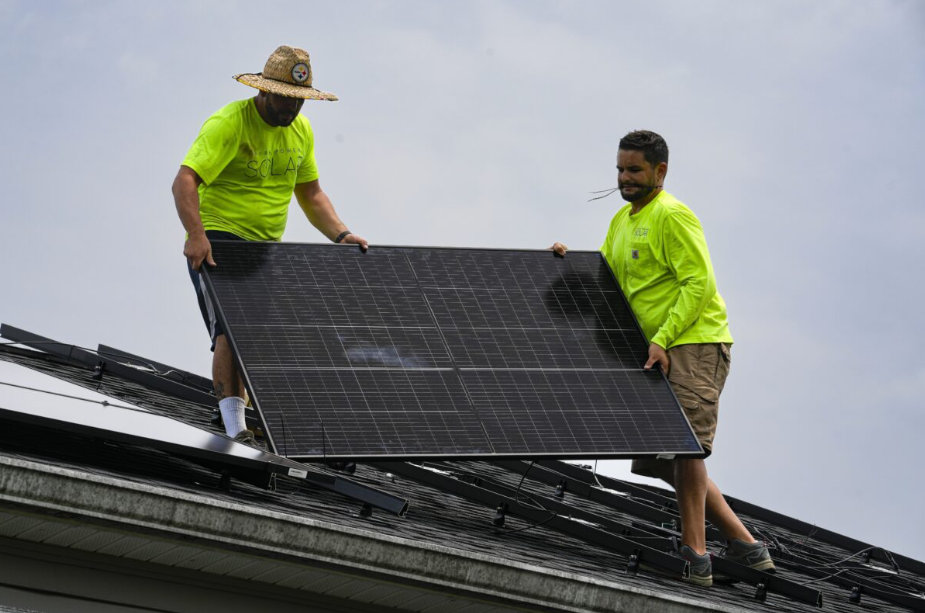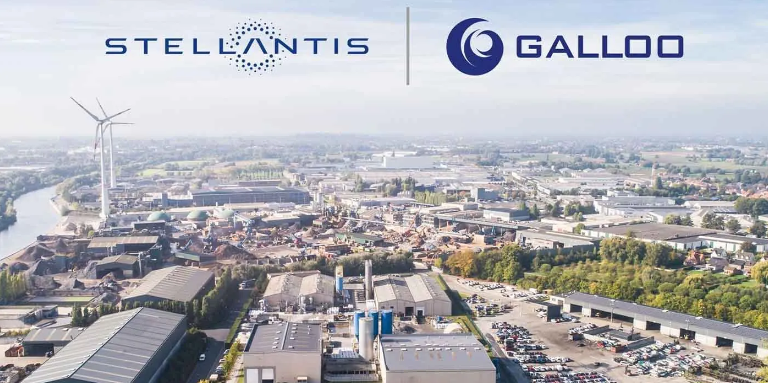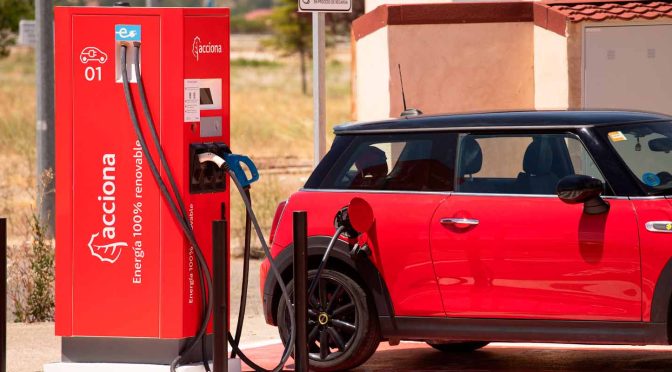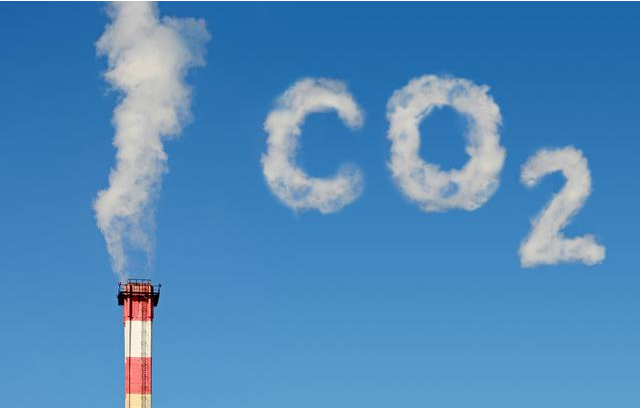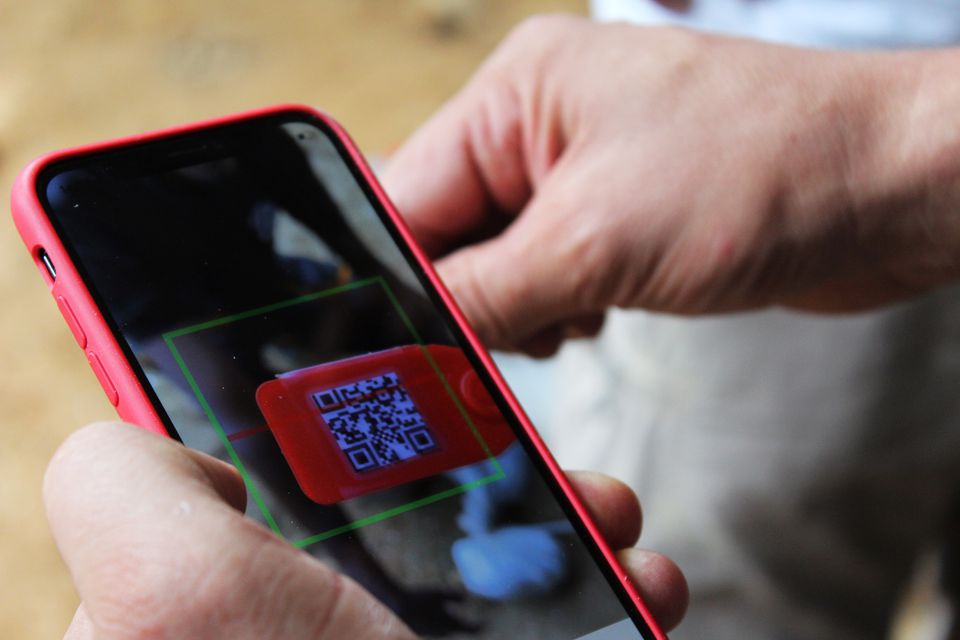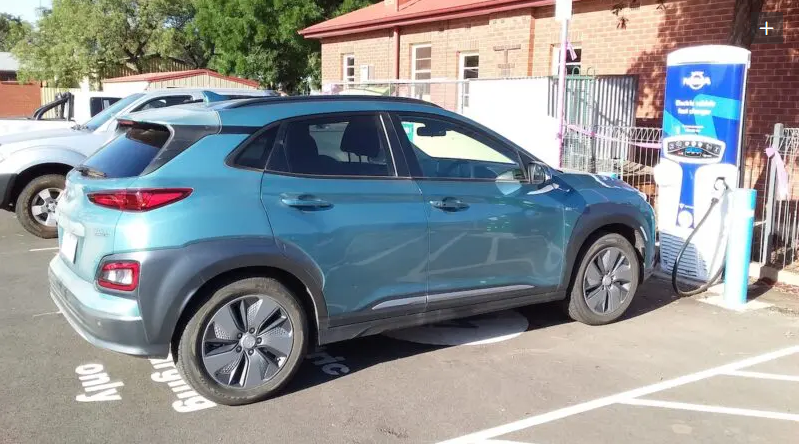
I often get asked about the speed of EV charging versus refuelling at a bowser: Generally, the worry is that EV charging is slow by comparison.
That would be true if you stood by the EV whilst it recharges, but that is exactly what you DON’T do when it comes to charging an EV (in comparison to refuelling an internal combustion engine – ICE -car).
The point is that EV charging is a different paradigm: You do your thing while the EV does its thing. After all, in most cars are only used 4% to 5% of the time: meaning they spend around 96% of their time sitting around doing nothing – so why not make use of that time?
So my general response to the question about EV charging speed is that charging for daily driving takes me 20 seconds: 10 to plug in at night, another 10 to unplug in the morning.
Plus, I don’t have to go out of my way to find and stop at a service station, hold the trigger refuelling, then pay, then get back onto the road. All this as time added to my daily driving trip. Add that time up over a year, I’ve saved lots of time for the 80% to 90% of my driving that involves charging at my home base or destinations.
Plus, as an EV driver you rapidly realise how we got used to fuel stations in the way you get used to a sore toe. If it persists, you put up with it and more or less forget about it – but when the pain goes away you realise how much it limited you.
But what about the other 10% to 20%? That breaks down to workplace charging and/or ‘opportunity charging’ for half to three quarters of that, with the other quarter for DC fast-charging. Opportunity charging is where shops, car parks, community centres etcetera offer cheap to free AC charging.
Again – you leave the car for an hour or so whilst shopping (or even 8 hours when it comes to the workplace) and the EV ‘does its thing’ whilst you’re doing yours. Refuelling time that you personally spent on the task? 20 seconds again.
That leaves the final 5% relating to DC fast-charging. In general, you DC fast-charge on long trips where you are exceeding the range of the battery in one day.
For safety on those trips, it is strongly recommended to take regular breaks. Personally, I try for 20 to 30 minutes every couple of hours – perhaps my first for morning tea, an hour for lunch and another 20 minutes or so for an afternoon break. With the driving range of my Kona, that easily gets me Melbourne to Sydney in one day.
So does an EV work there? My Kona electric (now 4 years old with the comparatively ‘slow’ DC charging rate of 70 kW) will do a 0% to 80% charge in 54 minutes on any DC charger offering over 70 kW. Mind-you, I never use that much charge in a couple of hours, even on the highway!
If I start at 100%, at my first stop on the way to Sydney I’ll still have 50%. On a DC charger above 70 kW, that 50% to 80% takes 20 minutes. I generally choose the cheaper 50 kW charger to give myself 30 minutes instead for a slightly more leisurely coffee, toilet and rest break.
If I had one of the latest generation of EVs – where charging speed is now upped to between 130 kW to 230 kW. For a 130 kW EV on a 150 kW charger, that 50% to 80% charge would be 10 minutes. EVs that can do 130 kW to 180 kW DC charging include pretty much any new EV that has come out in the last 12 months. (See aeva.au/fact-sheets for a full list).
For a 230 kW car on a 230 kW or above DC charger (examples include the Hyundai Ioniq 5 or 6, Kia EV6, Genesis GV60, Long Range Tesla Models 3 or Y), these are now down to around 7 minutes for that 50% to 80% charge. Barely enough to get a long drive pit-stop done!
Same for the lunch break: My Kona will comfortably recharge to 80% in less than an hour on a 50 kW charger even if I roll in with 20%. Perfect to find a lunch shop and sit down to eat. For the 230+ kW cars: even a 0% to 80% DC charge on the fastest DC chargers takes only around 18 minutes.
To summarise things, I’ve popped together a very general charging times table below.
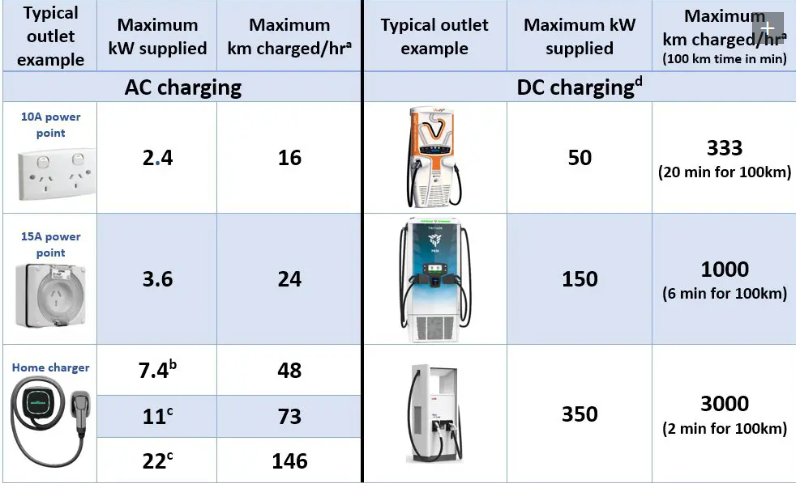
All charge times listed are estimates only and are not manufacturer endorsed. Please refer to official specifications when purchasing an electric vehicle.
Assuming 15kWh/100km efficiency
Single phase
Three phase
Theoretical at maximum kW rate. kW rate varies with state of charge and other factors
Summing up:
Charging using a power point, 15A outlet or home charger usually occurs in that 96% of vehicle down time. There is no waiting required.
Charging on-the-road via DC chargers is mainly done on long trips with charging times are already down to less than a normal pit-stop time for such a trip.
Occasional top-ups in daily driving using DC chargers where you might only want 100 to 200 km because you forgot to charge at home would take no more than 20 minutes in an older EV (like my Kona) and could be down to as little as a couple of minutes with the fastest chargers and latest EVs.
